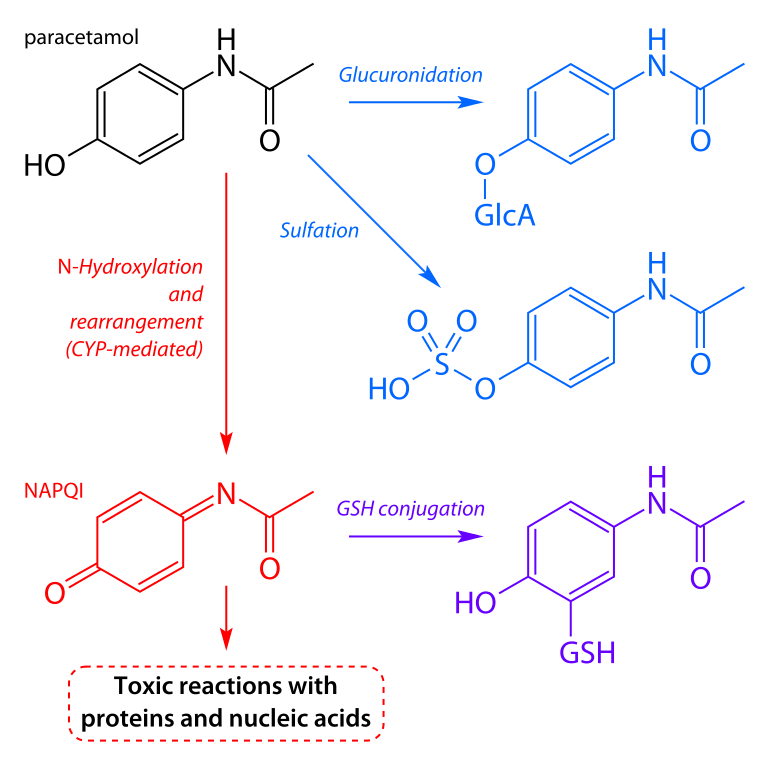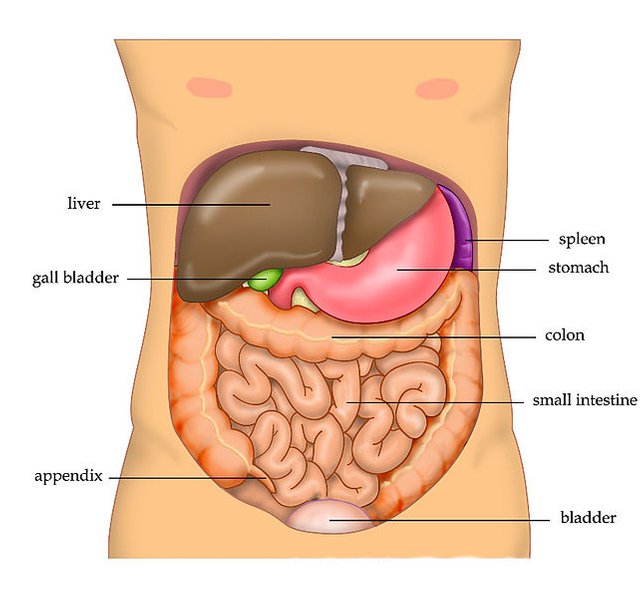Balance. A very essential thing in life. A typical example is hyperglycemia and hypoglycemia. Excessive amount of glucose in blood results in hyperglycemia which is lethal. Too little amount of glucose results in hypoglycemia which is also lethal.
Self medication is heavily frowned upon as that tends to underplay the role of medical practitioners in drug administration and disease management. People tend to take “harmless” drugs as they please as they actually believe “harmless” drugs can’t hurt you in whatever doses you choose to take them. A misconception at its best. A result of ignorance maybe.
It’s funny that when people hear of deaths due to drug overdose, they immediately assume only drugs like cocaine, LSD, mollies, Xanax, percocets, codeine and what not could possibly kill them. A misconstrued fact I’ll say. Do you think paracetamol can’t kill you as well ? Step up the dose and find out. Just kidding. Don’t step up the dose at all just allow me show you how a pain killer could turn to a human killer.
WHAT EXACTLY IS A PARACETAMOL ?(ACETAMINOPHEN)
Paracetamol (as called in Europe and other areas other than the US) or acetaminophen (as called in the US) is an antipyretic and analgesic agent. Pause. Let me explain what those “humongous” words mean.
- An antipyretic agent is an agent capable of relieving fever
- An analgesic agent is an agent capable of relieving pain
Quite simply put right ?
I don’t mean to bug you with chemistry but I’ll just have to let you know that paracetamol is an aminophenol. I can’t offer you any other explanation than, this means that, paracetamol contains an amino group and a phenol group in its structure. You can see it above.
Paracetamol is actually an over-the-counter drug (self explanatory I guess but just cause my audience are not just scientists only I’ll have to explain). An over-the-counter drug is a drug that is sold over the counter (quite corny I know).
Unfortunately, it is a nonprescription drug in many countries including my country, Nigeria. What this actually means is that, paracetamol can actually be sold without a need for a doctor’s prescription cause well who even thinks anyone would wanna abuse paracetamol ? Well, anything can be abused these days.
Paracetamol is, in fact, the most used antipyretic and analgesic agent available right now but that’s not what I’m here to talk about.
AT WHAT DOSE IS PARACETAMOL CONSIDERED AN OVERDOSE ?
This is a bit tacky I’ll say as several reviewed literatures border on two values exactly. One study said values above 4g within 24 hours is considered toxic while another study said values above 3g within 24 hours is considered toxic. So what values do we stick with ? I personally can’t say for sure but I’ll like to tell you something personal.
I’m currently on paracetamol medications and during the course of this post, I had to go check out how many milligrams each paracetamol tab actually weigh. 500 mg. I was instructed by my pharmacist to take 2 tabs thrice a day and technically, that means I am supposed to take 3 grams a day. I think that’s safe. I’ll personally stick with the study that said values above 3g are toxic. But I could be wrong.
IS EVERY PARACETAMOL OVERDOSE INTENTIONAL ?
Most people who do drugs just wanna get stoned, forget about their worries and go about their businesses as usual but most people don’t know where to draw the line.
Paracetamol overdose is quite strange but not uncommon. It has actually been divided into two categories;
- Accidental or unintentional overdose
- Intentional overdose
Accidental overdose could result due to a number of reasons;
- Miscalculation from the medical practitioner resulting in administration of higher than normal doses to the patient involved.
- Patients wanting to take more doses to speed up the antipyretic and analgesic processes for one reason or the other.
intentional overdose could be due to;
- Patients taking more and more doses of paracetamol in an attempt to take their lives
- Medical practitioners administering higher than normal doses to patients in an attempt to take their lives for some reason. Reminds me of the famous moonwalker’s doc (not paracetamol overdose tho)
HOW EXACTLY DOES PARACETAMOL KILL YOU ?(PATHOPHYSIOLOGY OF PARACETAMOL OVERDOSE)
The liver is the main detoxifying organ in the body (the kidney being the second). Drugs and chemicals are detoxified in the liver and this is achieved by the action of certain liver enzymes.
The detoxification of paracetamol by the liver however is our primary concern. This detoxification is both a blessing and a curse as it involves three primary pathways. Two pathways result in the formation of harmless soluble products while the other results in the formation of a harmful product which is behind the toxic nature of paracetamol.
Paracetamol is a weak acid so it is absorbed mostly in the duodenum(the upper part of the small intestine). The middle and bottom parts of the small intestine are referred to as the jejunum and ileum respectively.
After absorption through the small intestine, it goes into the portal circulation through the hepatic portal vein and is delivered to the liver. This basically what happens to every compound that gets into the portal circulation. They end up paying a compulsory visit to the liver. A tough one I must say.
The liver has a plethora of enzymes that can carry out its detoxification functions as well as numerous other functions. The three most important enzymes for its detoxification of paracetamol are UDP glucoronosyl transferase, sulfotransferase and cytochrome P450 2E1. A fourth enzyme called glutathione-S-transferase also plays a role and I’ll show you where it comes in.
The two main pathways for the metabolism of paracetamol are the glucuronidation and sulfation pathways. These pathways are responsible for as much as 95% metabolism of paracetamol and they produce the non-toxic soluble products that can be easily excreted in urine. The third pathway involved in the other 5% metabolism of paracetamol is the oxidative pathway. Here, a very toxic molecule known as N-acetyl-para-benzoquinone imine (NAPQI) is formed.
The glucuronidation pathway involves the conjugation of paracetamol with UDP-glucuronidic acid (UDP stands for uridine diphosphate, a nucleic acid and makes the forward reaction favourable since it is a high energy compound, very similar to what ATP does) to form a soluble glucuronide conjugate which is easily excreted in urine.
The sulfation pathway involves the transfer of a sulfo group from a sulfo group donor like 3’-phosphoadenosine-5’-phosphosulfate (PAPS) to the hydroxyl or amine group of paracetamol leading to he formation of a soluble product that can be easily excreted in urine.
The third pathway responsible for the toxicity of paracetamol involves the formation of NAPQI. This toxic molecule can react with protein and nucleic acid components of hepatocytes (cells of the liver) to form adducts which are harmful. But the body system always has a plan B so glutathione comes in here to mop up this toxic metabolite. Glutathione reacts with NAPQI via the enzyme glutathione-S-transferase to form harmless mercapturic acid conjugates that can be readily excreted in urine.
Here’s how paracetamol overdose potentially puts your life at risk. When a high dose of paracetamol is taken. The liver is made to work more. It does this job alone so no one can possibly assist it. It just has to work harder. The liver will still metabolize this drug mostly through the glucuronidation and sulfation pathways and to a lesser extent through the oxidative pathway.
As the dose increases, the first two pathways get saturated and the metabolism must go on anyway so it is shunted to the oxidative pathway. What does this imply ? More NAPQI molecules are produced. Glutathione will however do its work and mop up this metabolite but then, with time, glutathione gets depleted.
The toxic metabolite is produced in large quantities and it can destroy your liver completely at this rate of production. Once your liver fails, you lose your detoxification function and you know what that implies ? Basically any xenobiotic (strange chemical or drug) can kill you.
HOW CAN A PARACETAMOL OVERDOSE BE DETECTED ?
Paracetamol overdose can be detected by two main methods;
- Use of a nomogram: The Rumack-Matthew Nomogram predicts the possible level of liver injury by measuring the blood paracetamol level against the time since the paracetamol ingestion. This graph only comes to play after four hours of ingestion of a single dose of paracetamol because that’s the time it would take for paracetamol to be fully absorbed. Thus graph enables clinicians to know if only medications can do the job or a transport may be needed.
- Measurement of body fluids:
Blood and urine samples can be taken from patients suspected for paracetamol overdose and this cab measured by colorimetric methods. A blood paracetamol level of 50-300 mg/L is considered an overdose.
IS THERE A CURE FOR PARACETAMOL OVERDOSE ?
Well, luckily, there is but this is time dependent. N-acetylcysteine(NAC) is the current approved and most used cure for paracetamol overdose. It does this by replenishing glutathione stores thereby enabling the continued conjugation of NAPQI. This has to be administered not eight hours after paracetamol ingestion to ensure it’s effectiveness.
Activated charcoal can also be used. It is known to absorb toxic substances preventing its absorption by the body. It can absorb paracetamol preventing it’s absorption into the portal circulation and thus reducing its possible toxicity. This has to be taken within two hours as absorption hasn’t really gone far at this time. Any time later than this, is a failed attempt.
Cysteamine and methionine are also treatments for paracetamol overdose but have been ruled out due to the side effects that come with them
When all the above treatment options fail, a liver transplantation is the only option. Basically, this means that your liver needs to be replaced.
HOW CAN PARACETAMOL OVERDOSE BE CURTAILED?
The best way to curtail paracetamol OD is by limiting it’s availability. Making paracetamol prescription only medicine will go a long way to reduce paracetamol OD cause buying it as the doctor directs will only lead to it’s purchase in limited quantities and most importantly by only those who need pain and fever relief.
Paracetamol can also be sold in combination with other agents. It could be sold together with its antidote or with calcitriol, a catalyst (a molecule that speeds up a chemical reaction) for glutathione production)
ARE THERE FACTORS THAT INFLUENCE PARACETAMOL OVERDOSE ?
Actually there are a couple of them. Alcoholism and malnutrition.
Alcoholism can actually go both ways. Normal consumption of alcohol has been shown to reduce the likeliness for paracetamol overdose. This is due to the fact that alcohol and paracetamol are both substrates for the enzyme cytochrome P450 2E1 which metabolizes paracetamol to the toxic NAPQI metabolite. Alcohol has more affinity for this CYP enzyme and thus will be metabolized more by this enzyme letting the paracetamol molecule to be shunted into the two pathways that lead to safe products.
Excessive alcoholic intake will make you more susceptible to paracetamol overdose because the CYP 2E1 will be much more active and will metabolize alcohol more and even paracetamol in the process. Excessive alcohol intake also leads to malnutrition which depletes glutathione stores in the body.
Malnutrition can make an individual more prone to paracetamol toxicity as glutathione is supplied mostly in diet. Alcoholics are generally more prone to malnutrition as they spend more time drinking than eating. Glutathione has to be in steady supply so the NAPQI metabolite can be kept in check for the safety of the liver.
CONCLUSION
Paracetamol poisoning is a reality. This article perfectly (I hope !) portrays how paracetamol overdose can be the end of you. Do you find this article educative enough ? Or do you have questions or contradictions to ideas I have written down here ? Please let’s have fun in my comment section.
THANKS FOR COMING AROUND AGAIN :)
REFERENCES
1
2
3
4
5
6
7
8
9
10
IMAGE SOURCES
All images are from wikicommons licensed under creative commons and eligible for commercial use.
I'm a proud member of the steemstem community which promotes quality posts in the science, technology, engineering and mathematics fields on the steem blockchain mainly through interaction and engagement. Feel free to join us on discord here





Every drug has the likelihood of killing one as I'm yet to see a drug with zero side effect.
Downvoting a post can decrease pending rewards and make it less visible. Common reasons:
Submit
Very accurate but not everyone knows that
Downvoting a post can decrease pending rewards and make it less visible. Common reasons:
Submit
That's true. Not everybody knows. I'm also a victim, lolz. An eye opener post, awesome write man
Downvoting a post can decrease pending rewards and make it less visible. Common reasons:
Submit
Being A SteemStem Member
Downvoting a post can decrease pending rewards and make it less visible. Common reasons:
Submit
Wow.....to think i use up to three tablets sometimes, at least now i know its bad for my liver....
But i just have this feeling that two tablets are never effective
Downvoting a post can decrease pending rewards and make it less visible. Common reasons:
Submit
LOl follow the doctor’s instructions o. Your feelings don’t determine the dose o
Downvoting a post can decrease pending rewards and make it less visible. Common reasons:
Submit